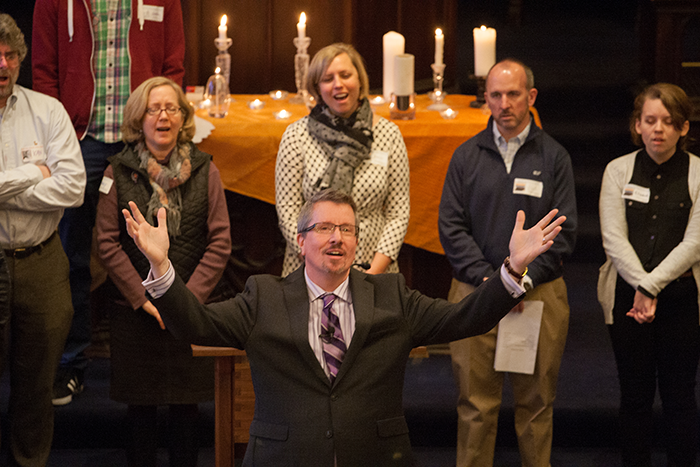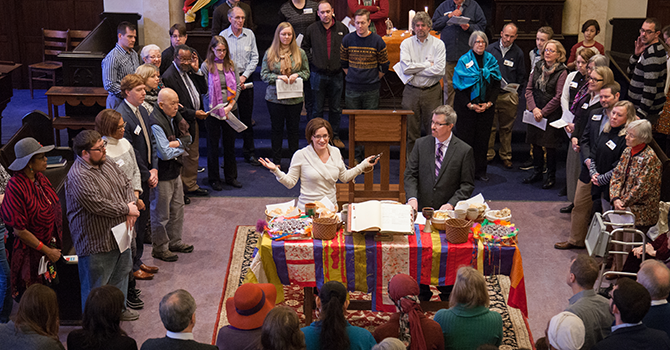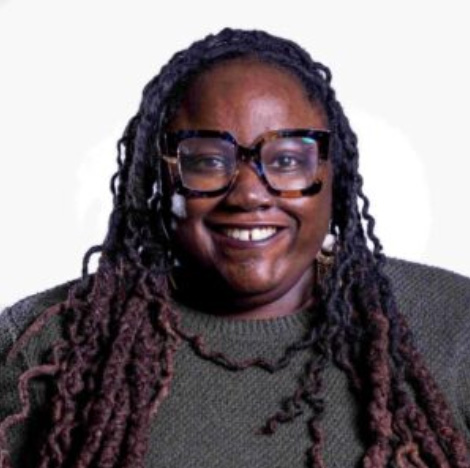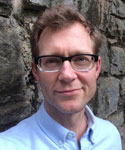Editor’s note: Church of the Pilgrims in Washington, D.C., is one of four organizations recently honored with the Traditioned Innovation Award from Leadership Education at Duke Divinity. The following is the second in an occasional series of articles about the award winners.
Update: The Rev. Jeffrey Krehbiel died on April 27, 2017.
Melissa Scaggs had attended Church of the Pilgrims in Washington, D.C., for about a year when the Rev. Ashley Goff, the church’s minister for spiritual formation, invited her to share a personal story during an upcoming Sunday service.
Scaggs, a Connecticut native, had begun to consider the Presbyterian church her home away from home, its congregation her extended family. But she was worried. What if the story she wanted to tell -- the story she needed to tell -- wasn’t appropriate? What if people were offended?
Uncertain what to do, Scaggs told Goff the story she’d told almost no one else.
“This is absolutely appropriate,” Goff assured her.

Church of the Pilgrims among 2016 winners
Leadership Education at Duke Divinity recognizes institutions that act creatively in the face of challenges while remaining faithful to their mission and convictions. Winners receive $10,000 to continue their work.
So on a Sunday morning in October 2012, Scaggs, then 24, walked to the center of the Pilgrims sanctuary, took a deep breath and shared how she’d been sexually assaulted when she was 14, how she’d struggled for years with depression, how even in recent years she’d wrestled with thoughts of suicide.
When she was done, she sat down in a pew next to Goff and rested her head on the minister’s shoulder. It was Goff’s first Sunday back at Pilgrims after losing her father to a sudden heart attack.
“When Melissa told her story, it was really intense, really deep,” Goff said. “And I was like, ‘Oh my God, someone just met me where I’m at, in that deep place.’ How many other people walk in here and need someone to meet them in that deep place?”
After the service, members greeted Scaggs and thanked her for telling her story. One approached Goff and told her that all the church’s many changes in recent years had been worth it.
What story are you most afraid to tell? How would your church respond?
“Someone told me, ‘For every decision and every penny that’s ever been spent on this place, it was all leading up to that point where Melissa could put her head on your shoulder,’” Goff said.
“I needed that moment, too,” Goff added. “She didn’t know that, but I did.”
Such moments typify Sundays at Church of the Pilgrims, where vulnerability is a virtue and worship is an innovative and deeply collaborative experience between clergy and congregants. Liturgy means “work of the people,” and at Pilgrims, the people truly share in the work of worship. They help plan each liturgical season and share the pulpit nearly every week, offering personal stories of pain and healing, celebration and reflection, awakening and transformation.

Over the past 17 years, Goff and longtime pastor the Rev. Jeffrey Krehbiel have worked hard to create what one member called “a culture of unconditional love and support,” an intimate space where people feel safe enough to journey regularly to that “deep place.”
Too often, Goff said, worship can be a passive, lonely affair. At Pilgrims, she said, it’s a community effort that inspires people to action. By helping the congregation push past discomfort and connect with God and each other, worship at Pilgrims prepares people to embody their faith outside the church, serving others.
“If we want to take this outside the walls, we have to practice that type of risk-taking in liturgy,” Goff said. “Ultimately, when we go out of here, we have to take serious risks: housing people who are unhoused, getting health care for those who don’t have it, creating safe spaces for the LGBT community.”
If worship stays the same, people will stay the same, Goff said: “But we can’t stay the same. If we want the world to change, liturgy has to change.”

What about your church needs to change in order to help change the world?
Church of the Pilgrims, inside and out
A rainbow-colored flag declaring ALL ARE WELCOME is draped above the entrance to Church of the Pilgrims, and a 42-foot-long #BlackLivesMatter banner hangs from the bell tower, publicly affirming the church’s commitment to inclusivity and social justice.
Inside, the sanctuary is set up like a theater-in-the-round, the result of a 2005 renovation to promote community and intimacy. Above the communion table at the center of the room, a crown of lights hangs from the high ceiling, and four banners, each with a quatrefoil motif, lend an air of coziness to the otherwise cavernous space.

On a recent Sunday, early arrivals for worship affixed nametags to their shirts and sipped coffee in the pews, while Billy Kluttz, the director of music, helped the small choir warm up. As children entered, they scattered to prayer stations around the perimeter of the room. There, using magnets and sand trays, magnifying glasses and binoculars, crayons and books, they explored basic concepts of worship -- making connections, seeing things differently and telling stories.
Though the church’s original raised pulpit remains on the chancel, Krehbiel never uses it, preferring a simple wooden lectern on the same level as the communion table and pews.
“It’s a democratization of the space,” said Kluttz. “We’re figuring out what the priesthood of the believers looks like.”
A 10-minute drive from the White House, Church of the Pilgrims was founded in 1903 and its current building constructed in 1928 with donations from Presbyterian churches throughout the South. Back then, the church was considered the national church of Southern Presbyterians, but by the 1950s and ’60s, it was at the forefront of the civil rights movement, with the Rev. Randy Taylor preaching equality and marching alongside Dr. Martin Luther King Jr.
By the time Krehbiel and Goff arrived -- he in August 2000, she 18 months earlier as the church’s director of Christian education -- the church’s heyday had long passed. Attendance was sparse, the building was run-down, funds were scarce, and morale was low after a rough parting with a previous pastor.
“Pilgrims was in a sad place,” Goff said. “Their sense of identity was gone. They didn’t know who they were, so worship felt of those things.”
When Krehbiel interviewed at Pilgrims, he could tell that members were proud of their past but anxious about the future.
“Our history didn’t save us,” one search committee member told him.
Not long after he became pastor, Krehbiel led a goal-setting session, asking members to identify their top priorities for the church and what changes would need to be addressed with the utmost caution and sensitivity.
“Changes in worship” topped both lists.
What are your church’s top priorities for change? Which would require the most sensitivity and caution?
The message?
“This is what we need to do, and this is the thing that makes us most nervous,” Krehbiel said.
For Krehbiel and Goff, the challenge was to help Pilgrims worship in a way that reflected who they actually were rather than who they thought they were supposed to be in the historic old space.

From passive to participatory
“The big shift was from the passive to the participatory,” Krehbiel said. “How do we take worship from something we watch to something we do?”
That’s a question many congregations wrestle with, said the Rev. Susan A. Blain, the minister for faith formation and curator for worship and liturgical arts for the United Church of Christ. An authority on worship, Blain has helped Goff brainstorm about liturgical creativity and is familiar with the changes at Pilgrims. Having laity play a more active role in worship requires courage and commitment from clergy, who must yield some control in order to create a safe environment where the congregation is willing to share what’s happening in their lives, she said.
“You begin to move away from this passive notion that worship is something that’s received,” Blain said. “It’s not a pastor declaiming something up front. It’s a pastor in the middle of everybody, encouraging whatever the response is, whatever the spirit is.”

As at most churches, members at Pilgrims had always played some role in worship, primarily logistical, organizing communion or procuring candles. But if worship was going to be relevant and imbued with a sense of belonging, then congregants needed to have a stake in the content, Krehbiel said.
At first, he asked for volunteers to help plan worship each week. After a while, to broaden the group, he and Goff recruited a cross section of congregants to the planning workshops. Now, a different group plans each season of worship, generally following the lectionary calendar, about four to six weeks in advance.
Krehbiel and Goff provide each group with the liturgical texts, and then, with Kluttz, they host an evening of brainstorming, encouraging lay leaders to unpack patterns, themes and symbols that might guide worship.
They ask the group questions: What has stayed with you from the past season? What’s the relationship between the text and what’s happening in our lives, in our community and in the world? What is the mood of the text? What are you wondering about? How do we make this season come alive?
“We discovered that members of the congregation were sometimes more venturesome than we were,” Krehbiel said. “When you do it yourself, you’re taking on all the risk. Now, we’re all kind of sharing in the risk.”
Krehbiel and Goff are still the church’s spiritual leaders, but sharing the pulpit and the planning process with others has allowed everyone to experience worship on a deeper level, said member Diana Bruce.

The ‘thin space’
“Ashley talks about the ‘thin space,’ when God is close,” Bruce said. “That happens here more than I’ve experienced in any other congregation. You’ve been invited to be so open and vulnerable that sometimes God is so close you can almost touch God.”
How and when does your community experience “thin” spaces? How can it make such moments more likely to happen?
That’s not to say the changes came easily or without fear. Stan Lou, a member since 1989, said some members grumbled when church leaders discussed renovating the sanctuary or altering long-standing traditions. A few people left, but the process was so inclusive that most embraced the changes.
Altering sacraments can be a sticky issue, Krehbiel said. Before he arrived, Pilgrims offered communion on the first Sunday of the month, distributed by elders to congregants as they sat in the pews. With maybe 65 worshippers scattered about a sanctuary built for 350, communion could be a solitary experience, Krehbiel said.
Eventually, at Krehbiel’s urging, the schedule became more flexible, with communion also being offered on Easter, World Communion Sunday and, some years, every Sunday during Lent. Perhaps more important, the church also changed how it did communion.
Now, communion is usually held around the table at the center of the sanctuary and is served not just by elders but also by other members and even children, in an effort to better reflect the community.
Beneath the fear of change, Goff said, is a deeper question: Will I still belong?
“And the answer is always yes,” she said. “In the spirit of the promise of the resurrection, something has to die for new life to come. That is what has happened here: constant resurrection of us, of liturgy, of how we are together. We worship as if we really trust God’s promise that as something is dying, something will come back to life.”
What might need to die within your church so that something else can come to life?
Krehbiel said one or two worshippers objected to walking up to a communion table, but getting up and moving about the sanctuary is now the custom at Pilgrims. Exchanging the peace might take 10 minutes as congregants shake hands and greet one another. Individual prayers of thanksgiving are shared aloud in a circle and affirmed by everyone in the room.
And with each season, new temporary prayer stations are often created where worshippers can reflect on themes such as healing and groundedness, impermanence and new beginnings. During Advent last year, the historic pulpit was decorated to look like a mountain, and worshippers could climb inside and write poetry.

No mistakes in improv and liturgy
Sundays at Pilgrims require a fair amount of improvisation as clergy and congregants share duties, and adults and children share worship space, Goff said. But fortunately, in both improv and liturgy, there are no mistakes.
“Do things go not as planned?” Goff said. “Yes. There are awkward moments, but it roots you. How do we react to each other when things don’t go as planned? Are we still kind? Loving? Do we have mercy for each other? When those moments happen, how has liturgy trained us to be loving people?”
As Pilgrims has grown into its new style of worship, some congregants have become “liturgical artists” who love experimenting with how the Word is delivered. Indeed, some of their suggestions resemble performance art.
Who are the liturgical artists in your congregation? How can they be best equipped to deliver the Word?
One year, during the church’s “Homecoming season” -- Sundays between September and November -- the planning group focused on the theme of food and faith, using visuals to illustrate dying and rising. Members were invited to toss scraps of fruits and vegetables for composting into a wheelbarrow just outside the sanctuary doors.
Inside, the baptismal font was filled with food that had begun to rot, and at the center of the sanctuary, the communion table was replaced with a large pile of compost topped by a pitcher, cup and bread. At a later service, the table returned, covered in newly harvested produce, symbolizing the resurrection and hopes for a restored planet.
World and national events can also shape worship. Last summer, after several high-profile shootings of black men by police officers, the church spent weeks exploring white privilege and the importance of “disrupting the center.”
Based on those discussions, they decided to break from their usual communion practice, in which members surround the table and pass the bread around the circle. Instead, members carried the bread across the circle, asking people on the other side whether they had been served. The change required people to pay attention and listen to each other, Goff said.
“What if that’s how we acted in the world every day?” she said. “‘What we’re asking people to do is mash up against each other. That’s what we’re asking them to do when they go outside. This is preparation for being in public space.”
One Sunday, to connect worship to service in the world, congregants spent part of the service making and delivering sandwiches to homeless people in nearby Dupont Circle or working in the church’s garden, which provides food for a Sunday communal meal for hungry neighbors.
“The stuff we do in worship wouldn’t make sense if we didn’t do the stuff outside of worship,” said Krehbiel. “You need a context that grounds your worship in what you’re doing in the world.”
Later this month, Krehbiel will begin taking that message and others to new congregations. After 17 years at Pilgrims, he’s starting work with The James Co., a church consulting firm, where he will help congregations with strategic planning and fundraising.
He’s leaving behind a much-changed church.

Even after several years of the “new” worship, Stan Lou said he’s still amazed by how it connects to his own experience. The son of Chinese immigrants, Lou said that hearing people’s personal stories in worship has helped him come to terms with the racism he experienced growing up. Krehbiel and Goff always find a way to make Scripture relevant to 21st-century life, he said.
“It’s not just rehashing old Bible stories,” Lou said. “They’ve brought out the word of God as a living, dynamic word that still has relevance in our lives today. It’s always real here.”
Questions to consider
Questions to consider
- What story are you most afraid to tell? How would your church respond? How would you want them to respond?
- What about your church needs to change in order to help change the world?
- What are your church’s most-needed changes and which would require the most sensitivity and caution?
- How and when does your community experience “thin” spaces? What steps would make such moments more likely?
- What might need to die within your church so that something else will come to life? How willing is your church to take that risk?
- Who are the liturgical artists in your congregation? How can you best encourage and equip them to deliver the Word?
- What does your church do inside that prepares congregants to serve outside?

















